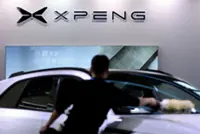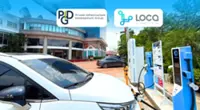Tesla electric vehicles are being charged at a charging station outside a dealership in Drogenbos, Belgium. Auto scrappage schemes are nothing new. They proliferated in Europe during the 2009 recession as a tool for stimulating spending and juicing regional carmakers. — Reuters
Colorado drivers bought 9,446 electric vehicles in the most recent quarter, but Carrie Atiyeh is particularly psyched about 45 of them.
Atiyeh, associate director of transportation fuels and technology at the Colorado Energy Office, is one of the architects of the state’s Vehicle Exchange Program, which hands out a rebate of up to US$6,000 (RM28,095) to anyone who buys a new EV while surrendering a combustion-engine car. The programme, which launched in late August, saw 45 people cash in a clunker by the end of September.





